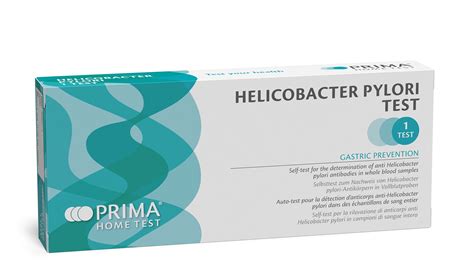Helicobacter pylori, commonly referred to as H. pylori, is a type of bacteria that primarily lives in the stomach lining. It’s a key cause of ulcers in the stomach and small intestine, and its infection is associated with an increased risk of developing stomach cancer. Diagnosing H. pylori infection is crucial for appropriate treatment, and several lab tests are available for this purpose. The choice of test often depends on the clinical scenario, the availability of resources, and the patient’s condition.
Types of H. Pylori Tests
Urea Breath Test (UBT): This is a non-invasive test that detects the presence of H. pylori by measuring the amount of carbon dioxide produced in the breath after the patient has ingested a small amount of urea with a subtle radioactive or non-radioactive isotope. H. pylori bacteria possess the enzyme urease, which breaks down the urea into ammonia and carbon dioxide. The carbon dioxide is then absorbed into the bloodstream and eventually exhaled.
Stool Antigen Test: This test involves collecting a stool sample, which is then analyzed for the presence of H. pylori antigens. The test is simple, non-invasive, and can be used to diagnose the infection as well as to confirm the eradication of the bacteria after treatment.
Blood Tests: Blood tests can detect the presence of antibodies against H. pylori in the blood. However, these tests are less commonly used for diagnosing current infections because they cannot distinguish between current and past infections. Moreover, it may take some time for the antibodies to disappear after successful treatment, making it less reliable for confirming eradication.
Endoscopy with Biopsy: During an endoscopy, a flexible tube with a camera is inserted through the mouth into the stomach. A biopsy, or a small sample of tissue, is taken from the stomach lining and then tested for H. pylori. This method not only diagnoses the infection but can also check for any damage to the stomach lining.
Rapid Urease Test: Similar to the UBT, this test detects the urease activity of H. pylori but is performed directly on a biopsy sample obtained during an endoscopy. The sample is placed in a special gel that changes color if H. pylori is present, indicating a positive result.
Choosing the Right Test
The choice of H. pylori test depends on several factors, including the clinical presentation of the patient, the availability of testing methods, the cost, and the patient’s ability to undergo certain procedures. For example, non-invasive tests like UBT and stool antigen tests are preferred for initial diagnosis due to their simplicity and minimal risk. However, in cases where a patient is undergoing an endoscopy for other reasons, a biopsy with rapid urease test or histological examination may be the most straightforward approach.
Interpretation of Test Results
- Positive Test Result: Indicates the presence of H. pylori infection. Treatment with a combination of antibiotics and acid suppressors is typically recommended.
- Negative Test Result: Suggests that H. pylori infection is not present. However, false-negative results can occur, especially if the patient has recently used antibiotics, proton pump inhibitors, or bismuth subsalicylate.
- Eradication Testing: After completing the treatment, a follow-up test (usually UBT or stool antigen test) is performed to ensure that the infection has been successfully eradicated.
Limitations and Considerations
While lab tests for H. pylori are valuable diagnostic tools, they have their limitations. For instance, the accuracy of some tests can be affected by recent use of certain medications or by the timing of the test in relation to the onset of symptoms. Additionally, not all individuals infected with H. pylori will develop symptoms or complications, which raises questions about the cost-benefit analysis of widespread screening in asymptomatic populations.
Future Directions
Research continues into improving diagnostic methods for H. pylori, including the development of more accurate, less invasive, and cost-effective tests. Furthermore, understanding the genetic variability of H. pylori and its implications for disease severity and treatment response is an area of ongoing investigation. As our knowledge of H. pylori and its impact on human health evolves, so too will the strategies for its diagnosis and management.
What is the most accurate test for diagnosing H. pylori infection?
+The choice of the most accurate test depends on the clinical scenario and the patient's condition. However, the urea breath test (UBT) and stool antigen test are considered highly accurate for detecting H. pylori infection and are often preferred due to their non-invasive nature.
Can H. pylori infection be cured?
+Yes, H. pylori infection can be cured with appropriate treatment, usually a combination of antibiotics to kill the bacteria and acid suppressors to reduce stomach acid, allowing the stomach lining to heal. Eradication of the bacteria is confirmed with a follow-up test after completing the treatment.
How common is H. pylori infection?
+H. pylori infection is one of the most common chronic bacterial infections worldwide, affecting approximately half of the world's population. The prevalence varies greatly by region, with higher rates in developing countries.
In conclusion, diagnosing H. pylori infection is a critical step in managing related diseases and preventing long-term complications. By understanding the available lab tests, their advantages, and their limitations, healthcare providers can make informed decisions about patient care, ultimately improving outcomes for those affected by this common bacterial infection.


